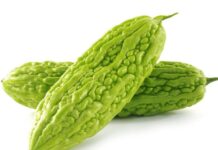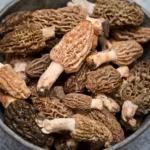Dr. Joel Fuhrman is a researcher and New York Times bestselling author. He has dedicated over two decades to studying nutritional science.
His research indicates that adopting a predominantly plant-based, nutrient-rich diet can help reverse signs of aging and improve cognitive function, even after years of unhealthy eating.
According to Blue Zones, Dr. Fuhrman recommends a diet rich in micronutrients and fiber, especially colorful plant foods, beans, nuts, and greens, similar to the diets of long-living people in Blue Zones around the world.
For instance, you can reduce your risk of lung cancer by quitting smoking before cancer develops. Similarly, a healthy diet can lower the risk of various cancers.
Even those who have already developed cancer have been shown to live longer by adopting a healthy, anti-cancer diet.
Dr. Fuhrman has coined a term for this group of foods: “G-BOMBS.”
“G-BOMBS are foods scientifically shown to prevent cancer. The acronym stands for Greens, Beans, Onions, Mushrooms, Berries, and Seeds. Eat them daily,” he says.
Making wise nutritional choices can accomplish what drugs cannot. Medications may reduce cancer risk by 10-15%, while a healthy diet can lower the risk by up to 100 times.
According to Dr. Fuhrman, sensible nutrition not only aids in weight loss, lowering cholesterol and triglycerides, and reducing cardiovascular risk, but it is also more effective than drugs in achieving these results. In other words, nutrition trumps standard pharmaceuticals.
Greens
Greens are among the most nutrient-dense foods. They are rich in phytochemicals, which protect blood vessels, combat inflammation, and reduce oxidative stress—a primary cause of cardiovascular disease and cancer.
All greens are high in folate and carotenoids, especially lutein and zeaxanthin, two prominent carotenoids that improve vision. One group of vegetables particularly rich in micronutrients and phytochemicals is the cruciferous family, including kale, broccoli, collard greens, cauliflower, and Brussels sprouts.
Cruciferous phytochemicals enhance health by activating Nrf2, the body’s natural detoxification system, and antioxidant enzymes. Consuming ample cruciferous vegetables can lower the risk of cancers such as lung, ovarian, gastric, breast, prostate, and colorectal cancer.
Additionally, other green vegetables like asparagus, celery, cucumbers, green beans, lettuce, spinach, and zucchini are also highly nutritious and health-supportive.

Beans
While the human digestive system cannot break down the fiber and resistant starch found in beans, these substances serve as prebiotics, nourishing our gut microbiota. Gut bacteria metabolize resistant starch into short-chain fatty acids (SCFAs), which have anti-inflammatory, immune-boosting, and cancer-protective effects, specifically against colorectal cancer.
SCFAs also help regulate metabolism, reduce the risk of weight gain, and improve insulin sensitivity. The high fiber content in beans speeds up intestinal transit, diluting potential carcinogens. Regular bean consumption is associated with a lower risk of colorectal, prostate, and breast cancers.
Onions
Onions, garlic, and leeks are part of the Allium family, distinguished by their organic sulfur compounds, which possess anti-cancer properties. Similar to isothiocyanates (ITCs) in cruciferous vegetables, these compounds are released when these vegetables are cut, crushed, or chewed.
When onions or garlic are cut or crushed, the enzyme alliinase is activated, forming organosulfur compounds with antioxidant, anti-inflammatory, and cancer-preventive effects. These phytochemicals help detoxify carcinogens and inhibit cancer cell growth. Numerous studies have shown that consuming more garlic and onions can reduce the risk of stomach and esophageal cancers.
To maximize the benefits from alliinase, either chew garlic or other Allium vegetables thoroughly or wait about 10 minutes after cutting or chopping before cooking. Onions also contain quercetin, a flavonoid that promotes DNA repair, inhibits cancer cell growth and induces cell death, and has anti-inflammatory properties, contributing to cancer prevention.

Mushrooms
Mushrooms contain beneficial phytochemicals such as ergothioneine, a potent antioxidant, beta-glucans that modulate the immune system, estrogen-inhibiting compounds that help prevent breast cancer, and prebiotic polysaccharides that support a healthy gut microbiota.
A 2021 analysis of 17 observational studies found that higher mushroom consumption was associated with a 34% lower risk of cancer overall and a 35% lower risk of breast cancer compared to lower mushroom intake.
Berries
Berries and pomegranates are low-sugar fruits packed with nutrients and phytochemicals. Consuming ample berries can reduce the risk of diabetes, cardiovascular disease, and cancer.
The distinctive colors of berries come from their rich flavonoid content, especially anthocyanins. Flavonoids and their metabolites enhance cellular detoxification and antioxidant enzymes while regulating cell signals related to inflammation.
Interventional studies have shown that adding berries to the diet reduces inflammation markers. In addition to anthocyanins, ellagic acid, resveratrol, and other polyphenols contribute to the cancer-preventive effects of berries.
Seeds
Synthetic analyses of seed consumption and cancer risk indicate that as seed intake increases, cancer risk decreases. Lignans from flax, chia, and sesame seeds have estrogen-blocking and protective effects against breast cancer.
The phytochemicals in seeds exhibit anti-proliferative, antioxidant, and anti-inflammatory properties, supporting overall health and a healthy gut microbiota.
Dr. Fuhrman emphasizes that the anti-cancer benefits are most effective when a healthy diet is adopted earlier in life. However, it’s never too late to improve your health. “You can slow aging, maintain a healthy weight, lower blood pressure, prevent or reverse diabetes, protect yourself from stroke and mental decline as you age. All of this can be achieved through improved dietary habits, leading to a higher-quality, healthier, and longer life.”
Does Hair Twirling Affect Your Child’s Intelligence? – Expert Scientific Explanation
It is a widely held belief that children with more hair whorls are inherently smarter. This age-old adage has sparked curiosity, with many seeking to understand the scientific explanation behind this phenomenon. Are hair whorls truly indicative of intelligence? To unravel this mystery, we turn to experts in the field, who provide insights into the fascinating connection between hair patterns and cognitive development, shedding light on the actual factors that influence a child’s intellectual growth.



































